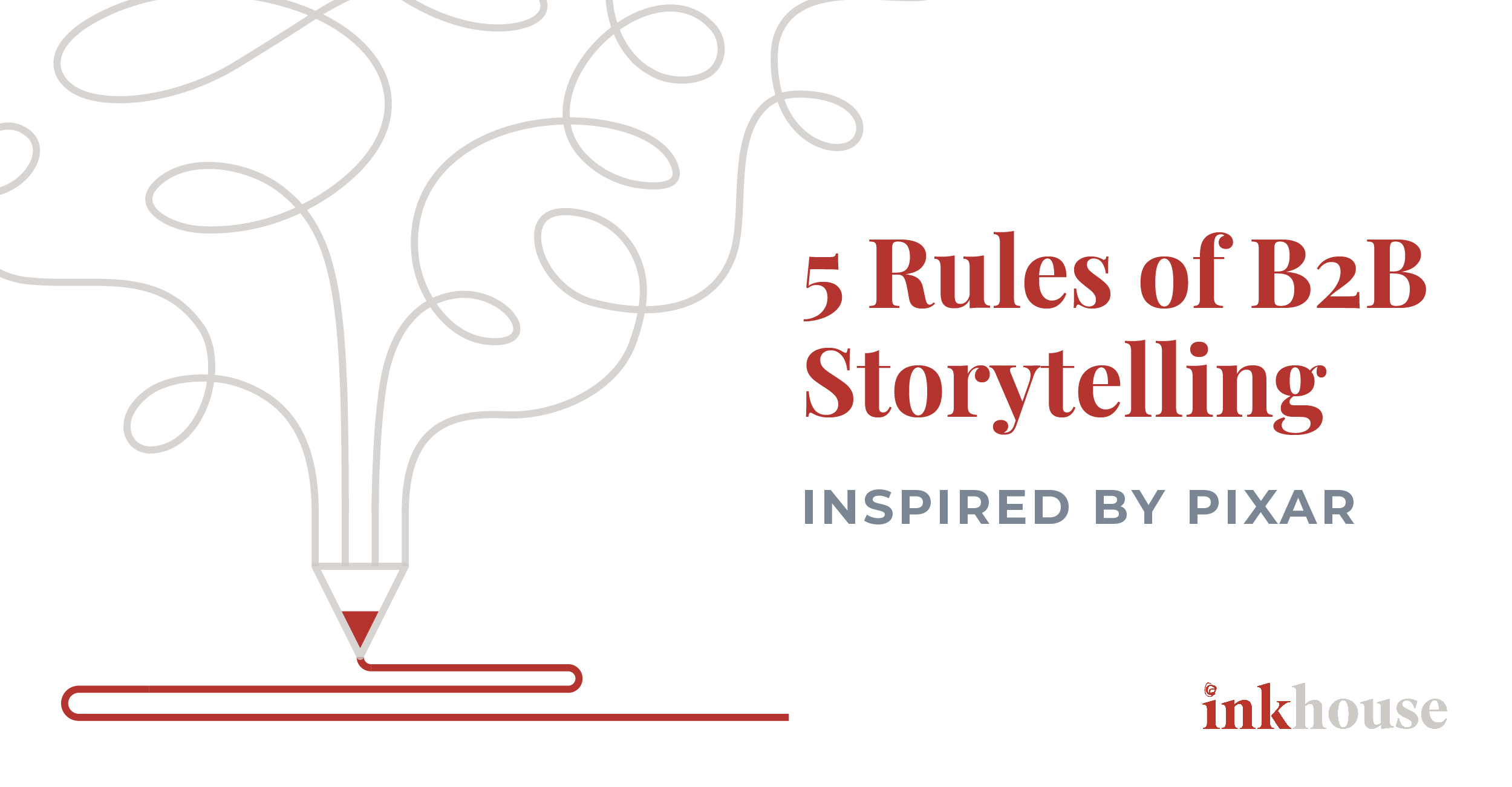5 Rules of B2B Storytelling, Inspired by Pixar
May 24, 2022 Alex Gnibus
Pixar knows a thing or two about telling stories that stick. Pixar films resonate emotionally across generations of audiences: Toy Story, Finding Nemo, The Incredibles and Coco, to name a few. How do they do it?
In 2011, former Pixar animation artist Emma Coats shared some insight into this process. She published her 22 rules for storytelling via Twitter, inspired by what she learned from watching the filmmaking process. The list was circulated as “Pixar’s 22 Rules Of Storytelling,” and you might have come across it in an article or your LinkedIn feed.
You don’t have to be an animation artist or a screenwriter or even an author to apply these rules in your career. PR and marketing pros tell stories all day.
Below are five rules from the Pixar playbook that marketers can apply right now to build great stories.
1) You admire a character for trying more than for their successes.
How do you give your executives, customers and products some #MainCharacterEnergy and put them in the center of the action? Don’t make them perfect.
A film in which the hero is a perfect person who doesn’t face conflict and never fails is not an interesting film at all. At the end of the day, people want to read stories they can relate to, which is why we love an underdog.
When reading the story of a company founder, audiences want to know more about their challenges than their successes. When reading a customer case study, prospective customers want to identify with the business pains that customers faced. No matter who you’re writing about, make them the “Main Character” by showing their struggles (and the ways they’re overcoming them).
2) Once upon a time, there was ___. Every day, ___. One day ___. Because of that, ___. Until finally ___.
Every day, Mike and Sulley worked as the perfect team to top the scare charts at Monsters, Inc. One day, Sulley stumbled upon a human child, Boo. Because of that, chaos ensued. Until finally Sulley and Mike returned Boo home, and with their newfound empathy for children, they also discovered they can solve the energy crisis by harvesting children's laughter instead of screams (this is a tech disruption story if I ever heard one).
Follow this formula to tell all kinds of stories: why a startup was founded, why you’re launching a particular product, why a customer chose your solution. Every narrative starts with a status quo and an existing, accepted way of doing things — and then an inciting incident rocks your Main Character’s world. Then they do something about it.
3) What are the stakes? Give us reason to root for the character. What happens if they don’t succeed? Stack the odds against.
The possibility of danger is compelling to an audience. Why should they care if your Main Character makes it? We need Marlin to succeed, or he doesn’t find Nemo.
When we’re communicating the value that a business provides, we often focus on the benefits gained — but we can flip that script by highlighting what could be lost.
Make it clear what the stakes are (hint: they’ve never been higher). Why should people root for your business and not your competitors? What innovations would the industry lose if your business fails? What do customers lose if they don’t adopt your product? What does the world lose if your customers don’t succeed?
4) What's the essence of your story? Most economical telling of it? If you know that, you can build out from there.
In other words: What’s your pitch?
One of the biggest challenges we face in marketing, especially in a practice area like enterprise technology, is taking an incredibly complex topic and distilling it into a simple narrative. Once you nail down the story you want to tell, figure out how to tell it quickly.
With a strong plot that gets to the point, you can convey it more easily across channels: social posts, digital ads, executive bylines, product messaging and so on.
5) Why must you tell THIS story? What’s the belief burning within you that your story feeds off of? That’s the heart of it.
Pixar tugs at your heartstrings because there’s a big human emotion underpinning every film. Toy Story makes us ugly-cry in public with every new release by reminding us of the human condition: You can’t stop change. To be alive is to be constantly moving on.
This is the part that makes the story stick. By finding the core belief that burns within your brand, you get at a universal truth that your audience can relate to on a deeper level. With a compelling core belief, you just might be able to tell a story about data analytics or cloud security that’s as memorable to your target audience as Buzz and Woody.
Are you ready to take B2B storytelling to the next level? Learn more about our approach by signing up for our weekly newsletter or contact our team today at workwithus@inkhouse.com.






